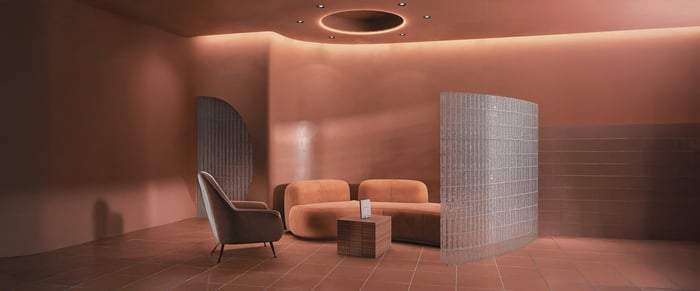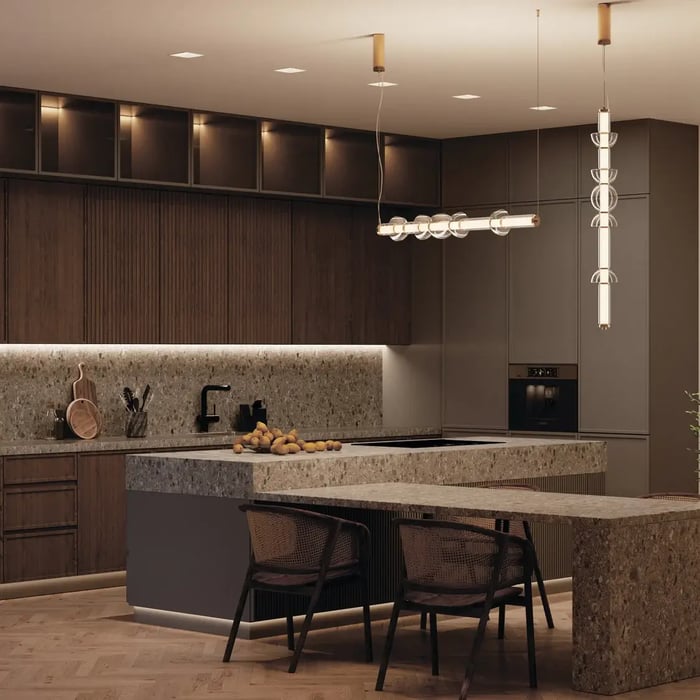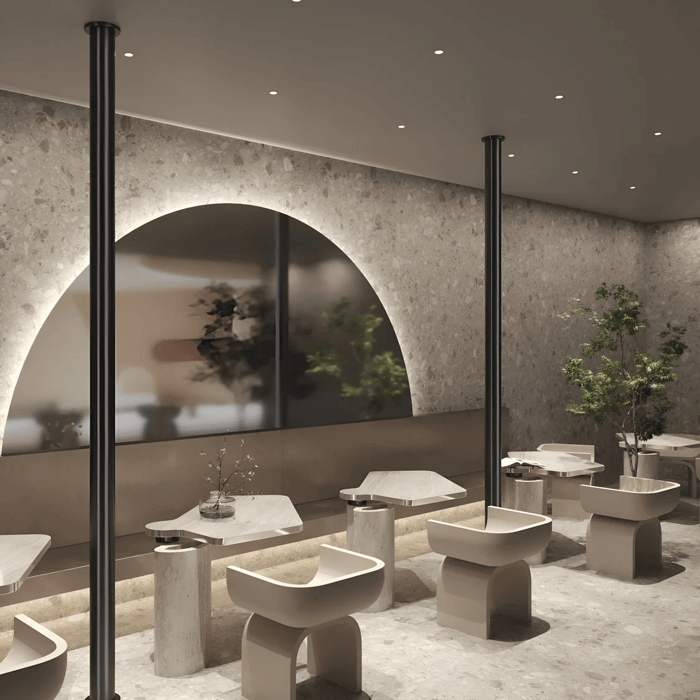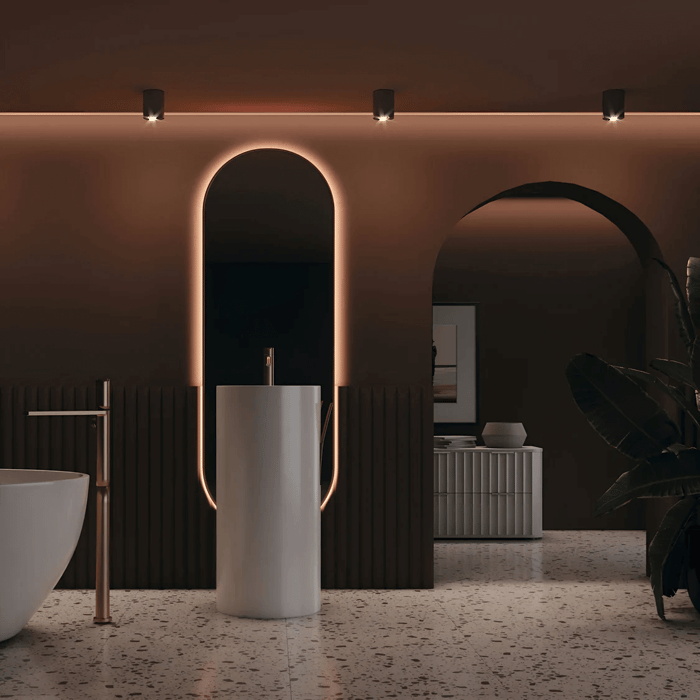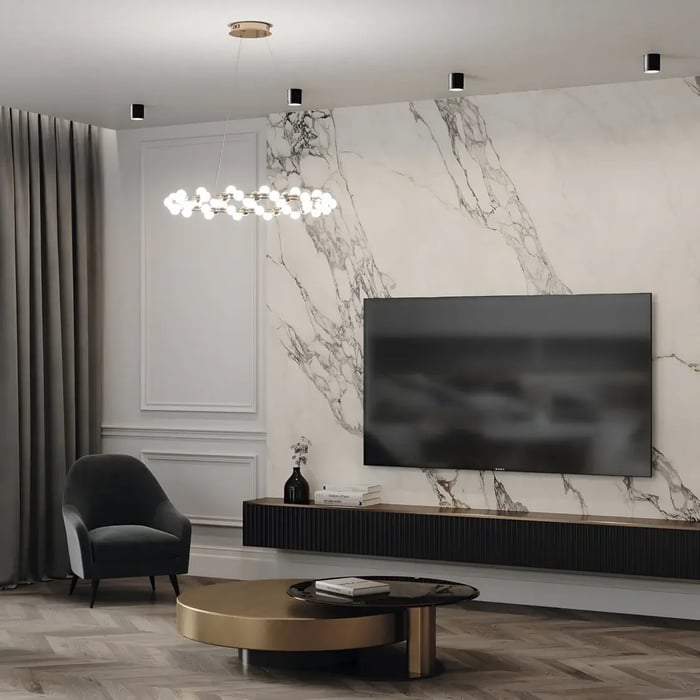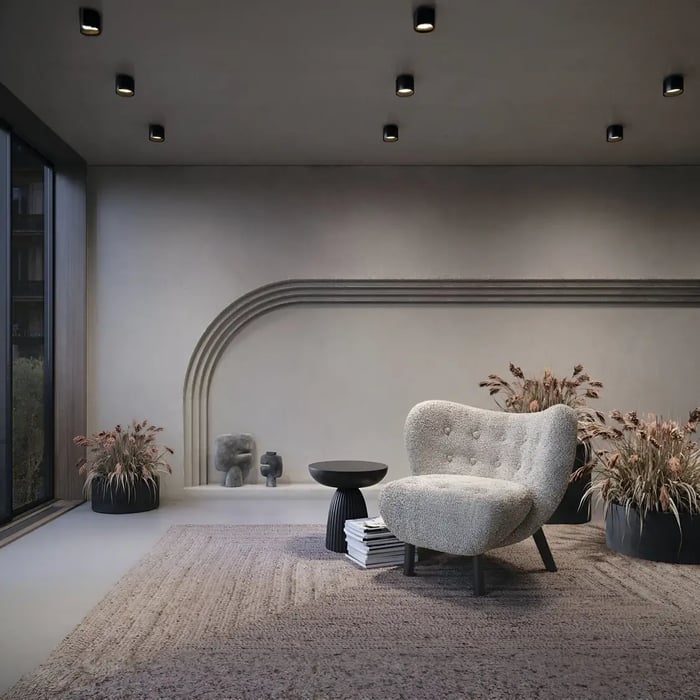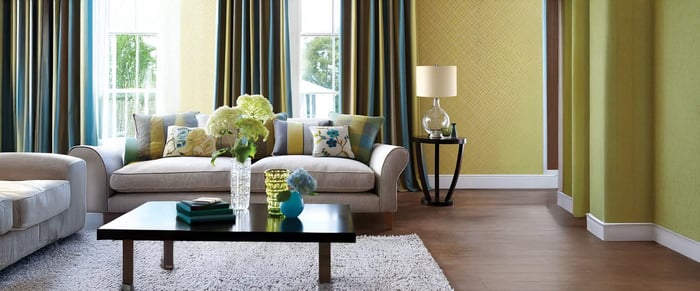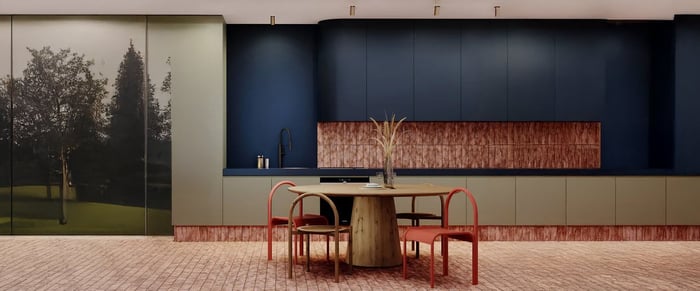Introduction
Downlights have quickly become a popular choice for homeowners seeking efficient, stylish, and functional lighting solutions. These fixtures provide focused illumination while maintaining a clean, minimalist aesthetic, making them ideal for modern spaces. If you’re looking to enhance ambiance, save space, or improve energy efficiency, downlights offer versatile and modern options. In this article, we’ll answer the most common questions about these fixtures, from their benefits to installation tips.
FAQ 1: What Are Downlights and How Do They Work?
Downlights are recessed lighting fixtures installed into the ceiling, designed to cast light downward. Unlike traditional hanging fixtures, they integrate seamlessly into the ceiling, offering a clean, unobtrusive look. The most common types include fixed lights, which stay in place, and adjustable lights, which allow you to direct the beam of light where needed.
These fixtures provide targeted illumination, which makes them ideal for accent lighting, task lighting, or general ambient lighting. Their compact and stylish design allows them to fit into space without taking up valuable floor or ceiling space, making them great for small or crowded areas.
FAQ 3: Are Downlights Energy Efficient?
Yes, LED lighting—especially in modern fixtures—is extremely energy-efficient. LED lights consume significantly less energy compared to traditional incandescent bulbs, which directly leads to lower energy consumption and reduced electricity bills. In addition to being energy-efficient, LED fixtures have a much longer lifespan, often lasting several years longer than incandescent or halogen bulbs. This durability means they don't need to be replaced as frequently, offering long-term savings on both energy and replacement costs.
Beyond financial benefits, LED lighting is an eco-friendly choice. By using less power, these energy-efficient bulbs help reduce the demand on power grids, leading to fewer carbon emissions and contributing to a greener home environment. This makes them a great choice for homeowners looking to cut down on energy costs while also making an environmentally conscious decision. If you're aiming to create a more sustainable living space, switching to LED lights is an excellent option that combines both cost-effectiveness and environmental responsibility.
FAQ 4: How Do I Install Downlights?
Installing downlights is a fairly straightforward process, though it does require attention to detail and proper safety measures. Here’s how to do it:
- Choose the Right Location: Decide where your fixtures will go. Consider both the function and the aesthetics of the space.
- Cut the Holes: Mark where each light will be placed, and use a hole saw to create the openings in the ceiling.
- Wiring: Turn off the power, then wire the lights to the electrical circuit.
- Secure the Fixtures: Insert the downlights into the holes and mount them securely with the provided clips or screws.
- Test the Installation: Once installed, switch the power back on to test that all fixtures are working correctly.
If you're unsure about electrical work, consider hiring a professional for lighting installation.
FAQ 5: Can I Use Downlights in My Kitchen or Bathroom?
Yes, downlights are a great lighting solution for both kitchens and bathrooms. In the kitchen, these fixtures can be placed above work areas, countertops, or islands to provide bright, even illumination for cooking. Adjustable lights can be directed to highlight specific areas, making them ideal for food prep or cleaning tasks.
In bathrooms, recessed lighting creates a clean, modern atmosphere while providing ample illumination for grooming or other tasks. However, when installing fixtures in moisture-prone areas, be sure to choose IP-rated lights, designed to withstand damp conditions safely.
FAQ 6: What Is the Difference Between Recessed and Surface-Mounted Downlights?
Recessed lights are installed into the ceiling, creating a flush, seamless look. This type of fixture is ideal for spaces with low ceilings or for achieving a minimalist design. Recessed lighting offers a moderen, unobtrusive look and is perfect for general lighting or accent purposes.
In contrast, surface-mounted fixtures sit slightly above the ceiling, making them more visible. These lights are great for rooms where you can’t recess the fixtures into the ceiling or when you want the lighting to be a more prominent feature. Both types offer effective lighting, but recessed options provide a more subtle, integrated look.
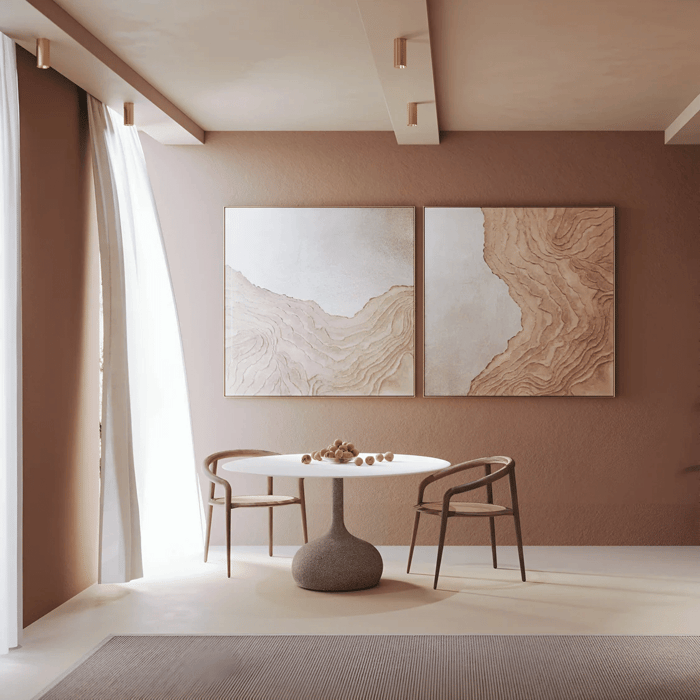
FAQ 7: How Long Do Downlights Last?
LED lights are built to last significantly longer than traditional incandescent or halogen bulbs. While conventional bulbs may only last up to 1,000 hours, LED fixtures can provide illumination for anywhere between 25,000 to 50,000 hours, depending on factors such as the brand, quality, and usage conditions. This extended lifespan translates into fewer replacements and a lower overall cost of maintenance, which makes LED lighting a much more cost-effective choice in the long run.
In addition to their impressive longevity, LED lights maintain their brightness and energy efficiency over time. Unlike traditional bulbs, which tend to lose intensity and efficiency as they age, LED fixtures continue to provide consistent illumination throughout their lifespan. This ensures a steady quality of light while also helping to reduce energy consumption and lower electricity bills. Their durability and long-term performance make them a highly reliable and sustainable lighting solution for both residential and commercial spaces.
FAQ 8: Are Smart Downlights Worth It?
Smart downlights offer a range of benefits, especially for those who enjoy integrating their home into smart technology. These lights can be controlled via smartphone apps or voice assistants like Alexa or Google Assistant, allowing for remote control and automation.
You can adjust brightness, set schedules, or change the color temperature with ease. Smart fixtures also help conserve energy by enabling dimming or automatic shut-off when not in use, further enhancing their efficiency.
If you’re looking for added convenience and control over your home lighting, smart lights are a great option.
FAQ 9: What Are the Benefits of Downlights for Small Spaces?
For smaller rooms or spaces with low ceilings, recessed lighting is a perfect choice. Its design doesn’t take up any visible space, which helps make the room feel more open and airy. These fixtures provide even illumination without overcrowding the room, making them ideal for compact spaces.
By using recessed lights, you can achieve a clean and modern look without sacrificing functionality or space. They also help create a sense of spaciousness by distributing light evenly across the room, making the area feel larger than it actually is.
FAQ 10: How Can I Make Sure My Downlights Are Safe?
When installing lighting fixtures, it is essential to follow the manufacturer’s guidelines carefully to ensure proper installation. Pay close attention to the wiring process, as incorrect wiring can lead to electrical hazards, which can be both dangerous and costly to fix. It’s also crucial to use high-quality fixtures that meet the required safety standards and certifications, ensuring they are safe for long-term use and perform efficiently. If you're uncertain about handling electrical work, it’s always best to hire a licensed electrician to install the fixtures for you. This not only guarantees the installation is done correctly but also provides peace of mind, knowing that safety protocols are being followed.
Additionally, when installing lighting in areas that are exposed to moisture, such as bathrooms, kitchens, or laundry rooms, it’s important to choose fixtures specifically designed for wet or damp conditions. Look for products that are IP-rated (Ingress Protection), which indicate they are designed to withstand water and moisture exposure. This will help prevent any risk of short circuits or other electrical issues that could arise from the humid environment. By selecting the right fixtures and ensuring proper installation, you can enjoy a safe and functional lighting setup in every part of your home.
Conclusion
If you are upgrading your current lighting or starting from scratch, recessed lighting offers a highly functional, energy-efficient, and stylish solution. These fixtures are particularly well-suited for modern homes, offering focused illumination that enhances any room's aesthetic. Aiming to create a bright, welcoming atmosphere or highlight specific features of a space, recessed lighting provides the flexibility to achieve both. Their minimalistic design ensures they blend seamlessly into the ceiling, providing illumination without overwhelming the room's decor. Additionally, their long lifespan and low maintenance make them an excellent investment for homeowners looking to create an enhanced lighting system.
